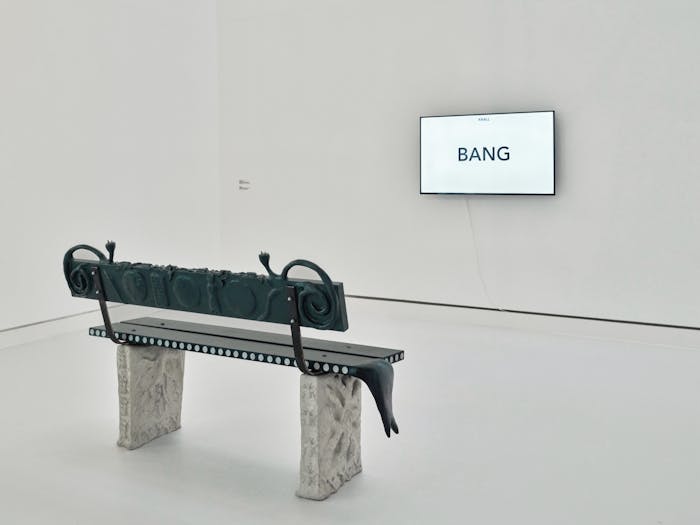Rather than working on his own, visual artist Sammy Baloji started engaging in collaborative projects early in his artistic practice. Mainly, his collaborators are researchers, activists and other artists. Baloji attributes these collaborations and interactions with others to his lack of a formal art education. His background is in science and communications, fields with strong links to the public sphere and requiring constant interaction. Moreover, colonial history was not taught at the University of Lubumbashi in the Democratic Republic of Congo when Baloji was a student there, so he began to question this history through collaborative projects as an artist. While working as a photographer at the Institut français in Lubumbashi immediately after graduating, he met Johan Lagae, who heads the department of Architecture at Ghent University in Belgium. Together, they started photographing architectural sites in Lubumbashi or places related to the city’s industrial heritage. These photographs highlighted the typology, history and orientation of the buildings in the city, as well as its segregated structure, which goes back to colonial times. They uncovered a multilayered architectural history that they felt could not be represented through the medium of photography alone, so they adopted other forms of documentation. In order to address the history of mining in and around his native city of Lubumbashi, Baloji began investigating and documenting the ways in which extractive industries have caused extensive destruction in the Katanga region, disrupting social structures, transforming the land into resources and reducing entire communities to a mere pool of potential labourers. He juxtaposes this harshness with the memories, hopes and projects of people who live amidst these colonial ruins, industrial mining and the global capitalist economy. When he was invited to Kunsthalle Mainz, it was only logical that Baloji would extend the invitation to include other colleagues. The art centre Picha, which he co-founded in 2008 with artist friends in Lubumbashi, plays a central role in his collaborative efforts and in this group exhibition. Together with curator and theorist Lotte Arndt, Baloji invited twelve DRC and European artists who have worked with Picha in the past: Nilla Banguna, Jackson Bukasa and Dan Kayeye and Justice Kasongo, Sybil Coovi Handemagnon, Fundi Mwamba Gustave and Antje Van Wichelen, Franck Moka, Hadassa Ngamba, Isaac Sahani Dato, Georges Senga and Julia Tröscher. Several artists have focused on issues and approaches that relate to the specific context of Germany. The exhibition’s starting point is Baloji’s critical questioning of the photographic archives of German ethnologist Hans Himmelheber (1908–2003), who collected images during a trip to Congo in 1939, when the country was still under Belgian colonial rule. In a series of collages mounted on mirrors that discreetly reference divinatory nkisi figures, Baloji brings together Himmelheber’s photographs with X-Ray images of various objects from the ethnologist’s collection. X-ray imaging is commonly used by museums to visualise the material structure and ‘hidden content’ of objects — a medical method of gaining information. By questioning such practices, Baloji offers a counter-narrative to the translocation of artifacts, which separates them from their use and cultural meaning. He thus invited writer Fiston Mwanza Mujila to create a kasala, a Luba poem, combining the recitation of elements from the genealogy of a celebrated person with mythological, cosmological and historical fragments. Baloji merges colonial images with the experiences and practices of people from the south-eastern region of DRC.
